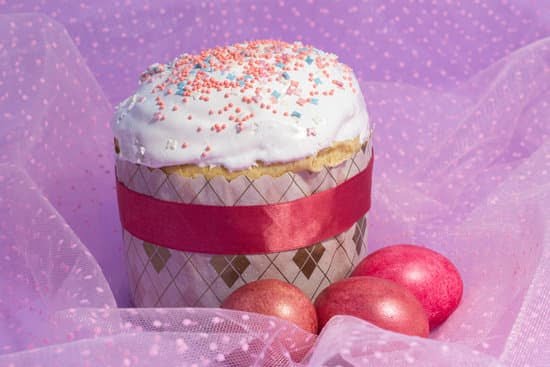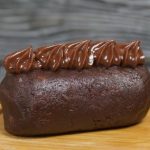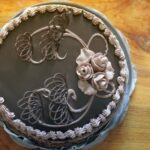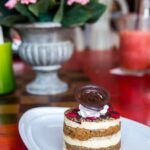Whether you’re a professional baker or an amateur cake decorator, mastering the art of decorative icing for cakes is essential for creating visually stunning and delicious treats. From classic designs to trendy and innovative techniques, decorative icing plays a crucial role in elevating the aesthetic appeal of cakes. In this article, we will explore the world of decorative icing, including different types, techniques, tools, tips, and troubleshooting common issues.
Decorative icing for cakes is more than just a finishing touch – it’s a form of art that allows bakers to express their creativity and enhance the overall presentation of their creations. Whether you’re aiming for elegant and traditional designs or experimenting with contemporary trends, understanding the basics of decorative icing is key to achieving professional-looking results. From frosting to piping techniques, there are endless possibilities for creating eye-catching cake decorations using various types of icing.
As we delve into this article on decorative icing for cakes, we will explore the fundamentals of different types and techniques of decorative icing. Additionally, we’ll discuss essential tools and equipment needed to create stunning designs, along with practical tips and tricks for perfecting your skills. Whether you’re a novice or seasoned decorator, this comprehensive guide aims to inspire and empower you to take your cake decorating game to the next level through mastery of decorative icing techniques.
The Basics of Decorative Icing
Decorative icing is a key component of cake decorating, as it allows for the creation of intricate designs and beautiful decorations that can elevate any ordinary cake into a stunning work of art. There are several different types of decorative icing that are commonly used in cake decorating, each with its own unique properties and techniques. Understanding these different types and techniques is essential for any aspiring cake decorator.
One of the most popular types of decorative icing is royal icing, which is made from confectioners’ sugar, egg whites, and flavorings such as vanilla or almond extract. Royal icing is known for its smooth finish and ability to hold intricate designs, making it ideal for creating delicate lacework or detailed piped decorations on cakes.
Another common type of decorative icing is buttercream, which is made from butter or shortening, confectioners’ sugar, and flavorings. Buttercream is versatile and easy to work with, making it perfect for frosting cakes as well as creating piped borders, flowers, and other embellishments.
In addition to royal icing and buttercream, there are also other types of decorative icing such as fondant, ganache, and glazes. Each type has its own unique properties and uses, allowing decorators to create a wide variety of designs and textures on their cakes.
Understanding the different types of decorative icing is just the first step – mastering the techniques for applying each type is equally important. From piping intricate designs to creating smooth finishes, each technique requires practice and skill to achieve professional-looking results. By exploring different types of decorative icing and honing your skills in applying them, you can take your cake decorating to the next level.
| Types of Decorative Icing | Main Ingredients |
|---|---|
| Royal Icing | Confectioners’ sugar, egg whites, flavorings |
| Buttercream | Butter or shortening, confectioners’ sugar, flavorings |
| Fondant | Sugar paste |
| Ganache | Chocolate and cream |
Tools and Equipment for Creating Stunning Decorative Icing Designs
When it comes to creating stunning decorative icing designs, having the right tools and equipment is crucial. The right tools can make the process easier and help you achieve professional-looking results. From basic essentials to more specialized equipment, here’s a look at some of the must-have items for anyone looking to elevate their cake decorating game with decorative icing.
Piping Bags and Tips
Piping bags and tips are essential for creating intricate designs with decorative icing. They come in various sizes and shapes, allowing you to create different patterns and textures on your cakes. Invest in a good quality set of piping bags that are sturdy and easy to handle. Additionally, having a variety of piping tips will give you more options when it comes to decorating your cakes.
Offset Spatula
An offset spatula is another indispensable tool for working with decorative icing. This long, flat spatula allows you to spread icing smoothly and evenly across the surface of the cake. It also helps in creating sharp edges and smooth finishes on your cakes, giving them a professional look.
Turntable
A turntable is a rotating platform that makes it easier to ice and decorate a cake. It allows you to spin the cake as you work, ensuring that you can reach all angles easily without having to constantly move around the cake. This makes the process smoother and helps in achieving even decorations.
Having these tools and equipment in your arsenal will make working with decorative icing for cakes much more enjoyable and efficient. With the right gear at your disposal, you’ll be able to take your cake decorating skills to new heights, creating stunning designs that are sure to impress any sweet tooth.
Tips and Tricks for Perfecting Your Decorative Icing Skills
Decorative icing for cakes is an art form that requires patience, practice, and precision. Perfecting your skills in this area can take time, but with the right tips and tricks, you can elevate your cake decorating game to a whole new level. Here are some helpful pointers to help you improve your decorative icing techniques:
- Consistency is Key: One of the most important factors in achieving beautiful decorative icing designs is having the right consistency of icing. Whether you’re working with buttercream, royal icing, or fondant, it’s crucial to achieve the perfect balance between stiffness and fluidity. Experiment with different recipes and techniques to find the ideal consistency for your specific design needs.
- Practice Piping Techniques: Mastering the art of piping is essential for creating intricate and eye-catching decorative icing designs. From simple borders and swirls to more complex floral patterns and lettering, practicing various piping techniques will help you develop confidence and dexterity in handling piping bags and tips.
- Color Mixing and Blending: Achieving the perfect shades and hues for your decorative icing can make a world of difference in the overall look of your cake. Take the time to learn about color theory and experiment with mixing different gel food colors to create unique palettes for your designs.
In addition to these tips, it’s also important to invest in quality tools and equipment specifically designed for decorative icing application. From offset spatulas and turntables to parchment paper and stencils, having the right supplies at your disposal can make a significant difference in the outcome of your cake decorating projects.
With dedication and practice, you’ll soon find yourself creating stunning decorative icing designs that will impress family, friends, or even clients if you’re considering pursuing a career in cake decorating. Don’t be afraid to get creative and experiment with new ideas – after all, mastering decorative icing is all about letting your imagination run wild.
Popular Decorative Icing Designs and Trends in Cake Decorating
When it comes to cake decorating, the use of decorative icing plays a significant role in creating stunning designs and patterns. From classic swirls and rosettes to modern abstract designs, the possibilities with decorative icing are endless. Here are some popular decorative icing designs and trends that have been making waves in the world of cake decorating:
- Buttercream Flower Bouquets: Using buttercream icing to create intricate floral patterns on cakes has gained popularity in recent years. By using piping techniques such as the petal, leaf, and ruffle, cake decorators can create lifelike floral arrangements that add a touch of elegance to any cake.
- Naked Cakes with Drip Icing: The trend of naked cakes – those with minimal outer frosting – has become increasingly popular for weddings and special occasions. To enhance the look of these cakes, decorators often use drip icing down the sides for a whimsical and organic feel.
- Watercolor Icing: Creating a watercolor effect with decorative icing has become a go-to technique for modern cake decorators. By blending different colors of icing together using a paintbrush or airbrush, decorators can achieve a dreamy and artistic look on their cakes.
In addition to these popular trends, there is also a growing emphasis on using edible metallic finishes and geometric patterns in decorative icing designs. Edible gold or silver leaf, as well as metallic dusts, are being used to add an opulent touch to cakes, while precise geometric patterns created with royal icing or fondant have gained traction for their modern aesthetic.
With constantly evolving trends in cake decorating, it’s important for decorators to stay updated on new techniques and designs. By incorporating these popular decorative icing designs into their repertoire, cake decorators can continue to elevate their skills and offer clients unique and visually captivating creations.
Getting Creative
Decorative icing for cakes is not just about the traditional swirls and rosettes. There are plenty of unique and innovative ideas to explore when it comes to decorating cakes with icing. One popular trend is the use of edible flowers and other natural elements to create stunning designs on cakes. Edible flowers such as pansies, violets, and roses can be delicately placed on top of a cake or frozen into ice cubes for a beautiful, botanical touch.
Another creative idea for decorative icing is the use of unexpected colors and textures. Instead of sticking to the classic white icing, consider experimenting with bold and vibrant hues like teal, lavender, or even metallic shades. Textured icing techniques such as ruffles, marbling, or watercolor effects can also add a unique and artistic flair to cake designs.
For those looking to take their decorative icing skills to the next level, incorporating hand-painted elements can result in truly one-of-a-kind creations. With a steady hand and some food coloring or edible paint, intricate designs such as delicate florals, intricate patterns, or even realistic landscapes can be carefully painted onto a cake for a truly show-stopping presentation.
| Icing Design Ideas | Description |
|---|---|
| Edible Flowers | Using real edible flowers to decorate cakes |
| Unexpected Colors and Textures | Experimenting with bold colors and textured techniques for icing |
| Hand-Painted Elements |
Troubleshooting Common Issues in Decorative Icing Application
Decorative icing for cakes is a beautiful and delicious way to enhance the appearance of any cake. However, sometimes issues can arise during the application process that may hinder the overall outcome of your cake decorating efforts. In this section, we will explore some common problems that may occur when applying decorative icing and provide helpful solutions to troubleshoot these issues.
Cracks and Crevices in Icing
One common issue when applying decorative icing for cakes is the formation of cracks and crevices in the icing. This can be caused by using icing that is too stiff or by over-mixing the icing. To avoid this problem, make sure to use the right consistency of icing for your design and avoid overworking the icing. If cracks do appear, you can gently smooth them out with a clean, damp paintbrush or spatula.
Uneven Icing Surface
Another challenge that decorators may encounter is achieving an even surface when applying decorative icing. Uneven surfaces can be caused by improper preparation of the cake’s surface or inconsistencies in spreading the icing. To address this issue, it’s important to properly prepare your cake by leveling it before applying the icing. Additionally, using a straight edge or offset spatula to spread the icing in smooth, even strokes can help create a consistent surface.
Color Bleeding or Runny Icing
Color bleeding or runny icing can also pose a problem when decorating cakes with decorative icing. This issue commonly occurs when using too much food coloring or liquid in the icing mixture. To prevent color bleeding, use gel-based food coloring instead of liquid coloring and avoid adding excess liquid to your icing mixture. Additionally, make sure your cake is completely cooled before applying decorative icing to prevent any potential runniness.
By understanding these common issues and implementing these troubleshooting techniques, you will be better equipped to overcome challenges when applying decorative icing for cakes and achieve stunning results every time.
Conclusion
In conclusion, mastering the art of decorative icing for cakes can truly elevate your cake decorating game to new heights. With a solid understanding of different types and techniques of decorative icing, the right tools and equipment, as well as tips and tricks for perfecting your skills, you can create stunning designs that will impress anyone who sees or tastes your cakes.
The world of cake decorating is constantly evolving, so staying updated on popular trends and unique ideas for decorative icing will keep your creations fresh and exciting.
One of the most exciting aspects of working with decorative icing for cakes is the endless creativity it allows. Whether you’re creating intricate floral designs, stunning ombre effects, or personalized custom designs, there are no limits to what you can achieve with decorative icing. By experimenting with different color combinations, textures, and techniques, you can push the boundaries of traditional cake decorating and bring your own unique style to the table.
While mastering decorative icing for cakes may come with its challenges, troubleshooting common issues in application can help you navigate any obstacles that may arise. With practice and perseverance, you can overcome these challenges and continue to improve your skills. With dedication and a passion for creativity, you can truly master the art of decorative icing and take your cake decorating to the next level.
Frequently Asked Questions
What Kind of Icing Do You Use to Decorate a Cake?
The kind of icing commonly used to decorate a cake is buttercream icing. It is made from butter, powdered sugar, and flavorings like vanilla or chocolate, and it can be easily colored and piped onto a cake.
What Is the Decorative Icing Called?
The decorative icing used for cake decorating is often referred to as royal icing. This type of icing dries hard, making it ideal for intricate designs like flowers or lacework on cakes. It is made from powdered sugar, egg whites, and sometimes lemon juice.
What Are the 5 Types of Icing?
There are five main types of icing used in baking: buttercream, royal icing, fondant, ganache, and glaze. Each type has its own unique texture and uses in cake decorating, from smooth fondant coverings to glossy glazes for finishing touches on pastries.

Welcome to our cake decorating blog! My name is Destiny Flores, and I am the proud owner of a cake decorating business named Cake Karma. Our mission is to provide delicious, beautiful cakes for all occasions. We specialize in creating custom cakes that are tailored specifically to each customer’s individual needs and tastes.





